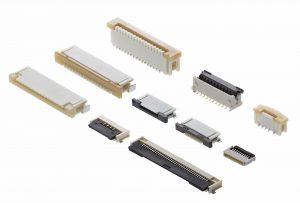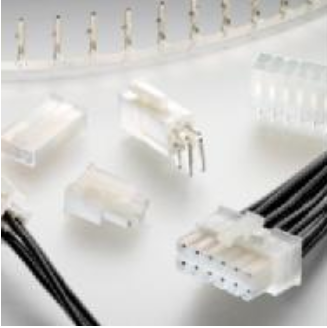The key technologies of intelligent robot include vision, sensing, human-machine interaction and mechatronics.From the perspective of application, intelligent robots can be divided into industrial robots and service robots.Among them, industrial robots generally include handling robots, stacking robots, spraying robots and collaborative robots.Service robots can be divided into industrial application robots and personal/household robots.Among them, industrial applied robots include intelligent customer service robots, medical robots, logistics robots, leading and welcoming robots, etc.Personal/household robots include personal virtual assistants, homework robots (e.g., sweeping robots), children's education robots, eldercare robots and emotional companionship robots.
I. analysis of the development status of intelligent robot industry
The global intelligent robot enterprise structure is mainly composed of industrial robots, personal/household robots and industrial service robots, accounting for 15%, 43% and 42% respectively.

Figure 1: global intelligent robot enterprise structure.(source: open source)
The global robotics market reached $50 billion in 2017.Total global sales of industrial robots reached 380,000 units in 2017, up 29 percent year-on-year.China has been the world's largest market for industrial robots since 2013.China sold 138,000 industrial robots in 2017, followed by South Korea with about 40,000 and Japan with about 38,000.In the americas, the United States is the largest single market, selling about 33,000 industrial robots.In Europe, Germany sold about 22,000.China, South Korea, Japan, the United States and Germany accounted for 71 percent of the global sales of industrial robots in 2017.

Figure 2: trend of global shipments of major industrial robot markets.(unit: station)
Since 2013, the size of the global service robot market has grown at an average annual rate of 23.5%. In 2018, the size of the global service robot market will reach 9.25 billion us dollars, and in 2020, it will rapidly grow to 15.69 billion us dollars.

Figure 3:20-13 global service robot market size and growth trend in 2018.
In 2018, the global market size of domestic service robot, medical service robot and public service robot is estimated to be 4.48 billion usd, 2.54 billion usd and 2.23 billion usd respectively, among which the market size of domestic service robot accounts for up to 48%, which is 20 percentage points higher than that of domestic service robot, public service robot and public service robot.

Figure 4: global service robot sales in 2012 and 2018.

Figure 5: proportion of global service robot sales in 2018.
Second, intelligent robot industry problem analysis
1. China's cutting-edge robot technology has not yet achieved global leadership
Robots are the product of interdisciplinary and high-tech integration. As a late industrial country, China is relatively weak in its industrial base.In the robot industry, the upstream core parts directly affect the performance of the robot, and account for more than 70% of the ontology cost, but at present, China's core parts are still dependent on imports.
At the same time, China's robot cutting-edge technology has not yet achieved global leadership, compared with the mature industrial robots abroad, there is still a big gap, the high-end market is significantly missing.
2. Key technologies of service robots are yet to be breakthrough, and the b-end market has not yet been clearly applied
At present, the domestic service robot localization in order to meet the basis of improving human life quality, the key equipment of artificial intelligence technology to achieve the international leading level, but from the perspective of market demand, existing products cannot meet the demand of users intelligent robots, human-computer interaction, smooth control, bionic function, key technology such as intellisense seriously restricting the service robot development.
3. The high price of products and the difficulty in guaranteeing the safety of functions and information lead to the doubt of service robot purchasing
The number of domestic service robot enterprises capable of mass production is small, and it is difficult to reduce the cost of products due to the difficulty in large-scale production. However, the c-end market is very sensitive to product price, and the high price threshold makes it difficult for service robots to enter the era of mass consumption.
4. Lack of industry standards and uneven quality of products
The development of robot industry must have a standard system to match it.At present, in order to guide the healthy development of the robot industry, China has issued and is developing more than 100 robots and related national standards.
Technology development faster, but domestic robot application scenario change is bigger, the national standards development cycle is long, usually need 2 ~ 3 years, and the existing standards is given priority to with industrial robots, the market active service robot and special robot application in specific areas are usually unable to find the corresponding standard as a quality evaluation basis, standards development process is obviously lagging behind the market development present situation;The existing robot standards in China are mainly based on mandatory safety certification, and lack of product functional certification, which makes the implementation of some local and enterprise standards not in place.At the same time, the industry standard punishment is not strong enough, the price is not high, directly lead to the domestic robot products good and bad.
Iii. Future development trend of intelligent robots
In the long run, the largest application market of artificial intelligence will appear in the field of service robot in the future. Facing the far more complex environment than the current industrial production, service robot has higher and more comprehensive requirements for artificial intelligence technology and has a larger market space.In the future, the market space of service robots will be very broad. The global sales volume of service robots will reach another level in 2019-2024, and it is estimated that the global sales volume of service robots will reach 17 billion dollars in 2024.

FIG. 6:2019-2024 global service robot sales trend forecast.
First, the service robot should be more anthropomorphic, which is the companion robot.
The second is to be more considerate, not only to personify, but also to be considerate care, care robot developed in Japan is very considerate patient.
Third, specialization, service industry specialization, specialization.Four is more superhuman, not only to personify, but also more than people, people can not move things it can move.Fifth, the application is more extensive.

 Englisch
Englisch  Chinesisch
Chinesisch  Deutsch
Deutsch  Koreanisch
Koreanisch  Japanisch
Japanisch  Farsi
Farsi  Portuguese
Portuguese  Russian
Russian  Spanisch
Spanisch 





